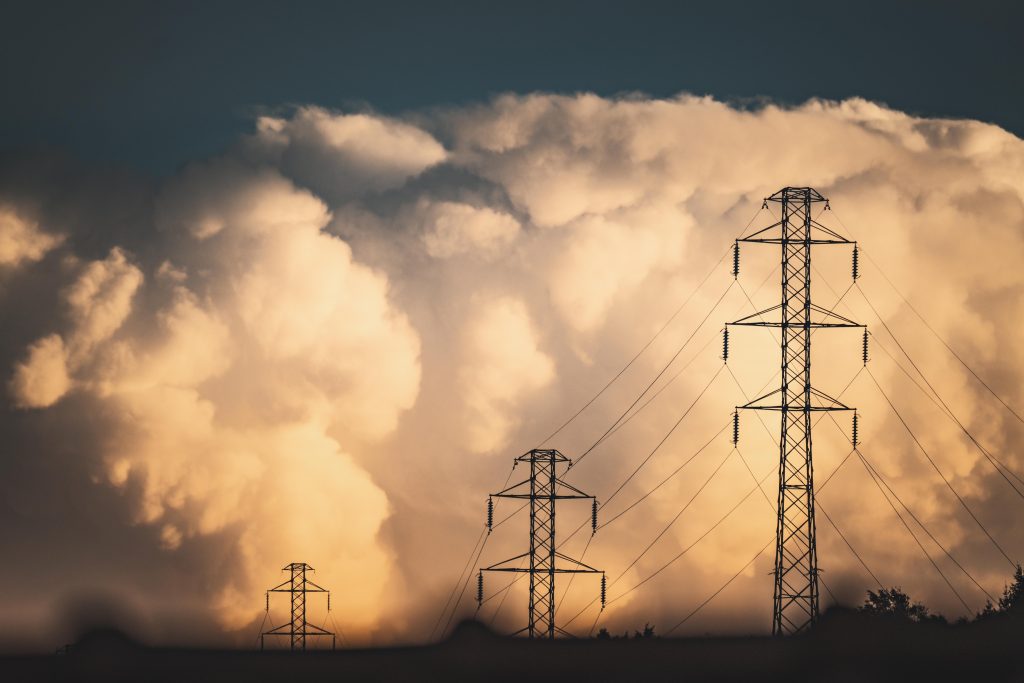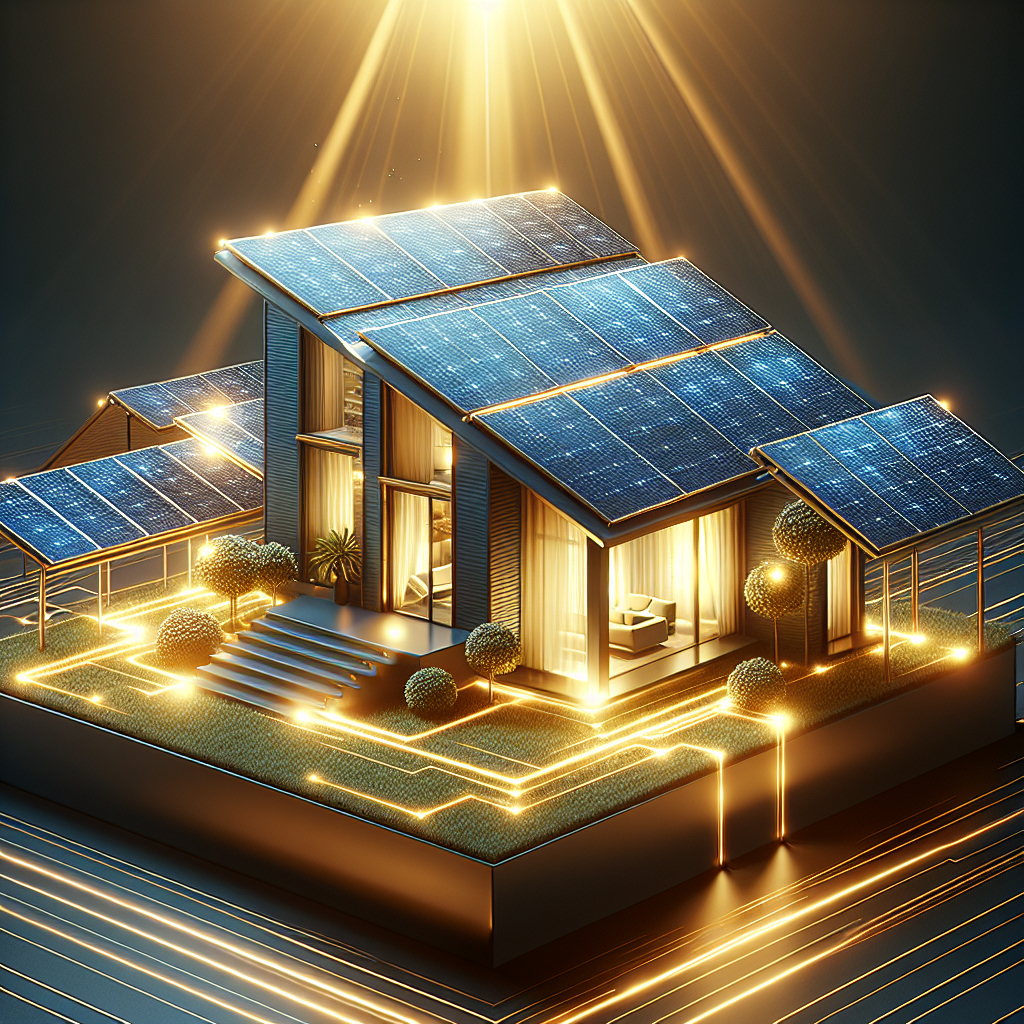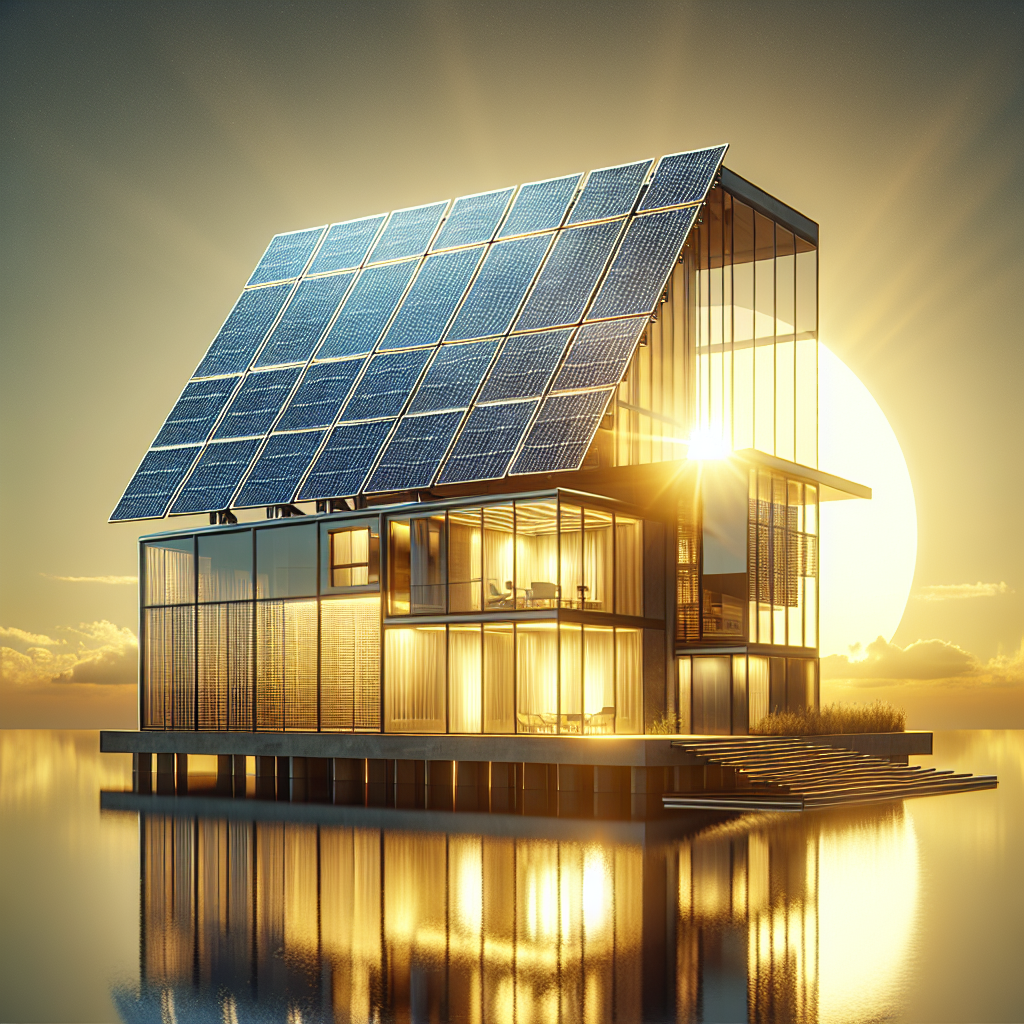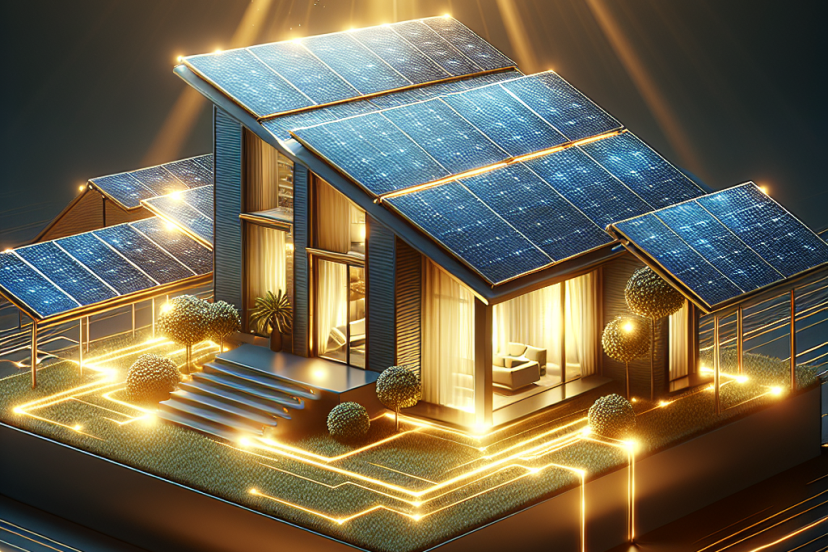How Do Solar Panels Work On A House
As an Amazon Associate, I earn from qualifying purchases, at no additional cost to you. Disclaimer
I have always been fascinated by the idea of harnessing the power of the sun to generate electricity. Solar panels have become increasingly popular in recent years, but the question remains: How do these ingenious devices actually work on a house? In this article, I will delve into the fascinating world of solar panels and explore the mechanisms behind their operation. From the capture and conversion of sunlight to the integration into a home’s electrical system, we will uncover the magic behind these green energy solutions. So, sit back, relax, and prepare to be amazed by the wonders of solar technology.
Understanding Solar Energy
What is solar energy?
Solar energy is the radiant light and heat from the sun that is harnessed and transformed into usable energy through various technologies. It is a renewable and abundant source of power that can be converted into electricity or used for heating and powering various devices.
Why solar energy is important?
Solar energy is important for several reasons. Firstly, it is a clean and sustainable source of power that does not produce harmful greenhouse gas emissions, unlike fossil fuels. By using solar energy, we can reduce our reliance on non-renewable resources and mitigate the negative effects of climate change. Solar energy also provides energy independence, as it can be sourced locally and does not require transportation or distribution. Additionally, solar energy creates job opportunities and stimulates economic growth in the renewable energy sector.
How the sun’s energy is captured
The sun’s energy is captured through the use of solar panels, which are typically installed on rooftops or in open areas that receive ample sunlight. These panels contain photovoltaic (PV) cells, which are made up of semiconductor materials that convert sunlight into electricity. The PV cells absorb the sun’s rays and generate a flow of electrons, creating a direct current (DC). This DC power is then converted into alternating current (AC) through an inverter, making it compatible with the electrical systems in homes and buildings.
Basics Of Solar Panels
What are solar panels?
Solar panels, also known as photovoltaic panels, are devices that convert sunlight into electricity. They are made up of multiple PV cells, which are wired together to form a module. These modules are then interconnected to create a solar panel. The panels are designed to withstand various weather conditions and are typically installed on rooftops or mounted on the ground.
Components of a solar panel
A solar panel consists of several components, including PV cells, a frame, a protective glass or polymer cover, and electrical connections. The PV cells are the most important part and are responsible for converting sunlight into electricity. The frame provides structural support and protection, while the cover shields the PV cells from dust, moisture, and other external factors. The electrical connections allow the generated electricity to be transferred to the inverter and then to the electrical system of the house.
Types of solar panels
There are different types of solar panels available, each with its own advantages and characteristics. The most common type is crystalline silicon panels, which can be further categorized into monocrystalline and polycrystalline panels. Monocrystalline panels have a higher efficiency and a sleek black appearance, while polycrystalline panels are more affordable but slightly less efficient. Another type is thin-film solar panels, which are made by depositing several thin layers of photovoltaic material onto a substrate. While thin-film panels are less efficient, they are more flexible and can be used in a wider range of applications.
The role of solar panels in energy production
Solar panels play a crucial role in the production of solar energy. When exposed to sunlight, the PV cells in the solar panels absorb the sun’s energy and generate an electrical current. This current is then harnessed and utilized as electricity to power various devices and appliances in homes, businesses, and industries. By installing solar panels, individuals and organizations can reduce their reliance on traditional energy sources and contribute to a more sustainable and eco-friendly energy system.
How Solar Panels Work
The science behind solar energy conversion
solar energy conversion begins with the interaction of sunlight with the PV cells in the solar panels. The PV cells are made of semiconductors, usually silicon, which have special properties that enable the conversion of sunlight into electricity. When sunlight hits the PV cell, it excites the electrons in the semiconductor material, causing them to move and create an electric current. This flow of electrons is the basis of solar energy production.
The role of photovoltaic cells
Photovoltaic cells, also known as solar cells, are the heart of solar panels. They are responsible for converting sunlight into electricity using the photovoltaic effect. A single solar cell is a wafer-thin piece of semiconductor material, usually silicon, which is specially treated to have a positive and negative layer. When sunlight hits the cell, it knocks loose electrons in the negative layer, creating an imbalance of charges. This generates an electric field that causes the electrons to flow in a specific direction, creating an electric current.
Generation of direct current (DC)
The electricity generated by the solar panels is in the form of direct current (DC), which is a flow of electric charge in one direction. This type of electricity is different from the alternating current (AC) that is commonly used in homes and buildings. DC electricity is more suited for storage and can be used for certain direct current appliances. However, most household appliances and the electrical grid operate on AC electricity, so the DC power generated by the solar panels needs to be converted.
The conversion of DC to AC current
To convert the DC power generated by the solar panels into the AC power required by the electrical systems in homes and buildings, an inverter is used. The inverter takes the DC electricity from the solar panels and converts it into AC electricity, which is then fed into the electrical system. This conversion is necessary to ensure compatibility with existing appliances and to allow excess electricity to be fed back to the grid. The inverter also plays a crucial role in monitoring and optimizing the performance of the solar panels.
Installing Solar Panels on a House
Required conditions for installation
Before installing solar panels on a house, certain conditions must be met to ensure optimal performance and efficiency. The most important requirement is access to unobstructed sunlight for a significant part of the day. Roofs or areas that receive direct sunlight without shading from nearby structures, trees, or other obstacles are ideal for installation. Additionally, the roof should be structurally sound and capable of supporting the weight of the solar panels. The orientation and tilt angle of the roof may also affect the efficiency of the solar panels.
Choosing the best location
Choosing the best location for solar panel installation involves assessing the available space, sunlight exposure, and potential obstructions. South-facing roofs typically receive the maximum amount of sunlight throughout the day, making them the preferred orientation for solar panels in the Northern Hemisphere. East or west-facing roofs can also be suitable, depending on the specific location and energy needs. It is important to consider any shading from nearby buildings, trees, or structures, as shading can significantly reduce the efficiency and output of the solar panels.
Installation process
the installation process of solar panels on a house typically involves several steps. Firstly, the roof is inspected and assessed for its suitability and structural integrity. Next, the necessary permits and approvals are obtained from the local authorities. Once the permits are obtained, the solar panels are mounted on the roof or ground-mounted in a suitable location. The electrical connections are made, and the inverter is installed to convert the DC power generated by the solar panels into AC power. Finally, the system is tested, and any necessary adjustments are made to ensure optimal performance.
Connection to a house’s electrical system
To connect the solar panels to a house’s electrical system, the AC power generated by the solar panels is fed into the main electrical panel. This allows the solar energy to be used to power the various appliances and devices in the house. If the solar panels produce more electricity than is being used, the excess energy can be fed back into the electrical grid, effectively reducing the homeowner’s energy bill and sometimes even earning credits from the utility company. This connection is typically made through a net metering arrangement, which monitors the amount of electricity consumed and generated.

The Role Of Solar Inverter
What is a solar inverter?
A solar inverter is an essential component of a solar energy system that converts the DC power generated by the solar panels into the AC power used in homes and businesses. It is responsible for ensuring the compatibility and safety of the generated electricity with the existing electrical system. The inverter also monitors and optimizes the performance of the solar panels, ensuring maximum energy production and efficiency.
Types of solar inverters
There are different types of solar inverters available, each with its own characteristics and applications. The most common type is the string inverter, which is connected to multiple solar panels in a series, forming a string. This type of inverter is cost-effective and suitable for most residential installations. Another type is the microinverter, which is attached to each individual solar panel, allowing for maximum system flexibility and optimization. Microinverters are particularly useful in cases where shading or panel orientation variations occur. There are also hybrid inverters, which allow for the integration of a solar battery storage system.
Function of a solar inverter
The primary function of a solar inverter is to convert the DC power generated by the solar panels into AC power. This conversion is necessary because the electrical systems in homes and businesses are designed to operate on AC power. The inverter ensures that the electricity produced by the solar panels is compatible with existing appliances and devices. Additionally, the inverter maximizes the energy production by continuously monitoring and adjusting the output of the solar panels, taking into account factors such as sunlight intensity and temperature variation.
Connection of an inverter with the electrical system of house
The connection of a solar inverter with the electrical system of a house involves integrating it into the main electrical panel or distribution board. The inverter is typically installed near the main panel to allow for easy connection. The AC output from the inverter is connected to a dedicated circuit breaker in the panel, which distributes the solar-generated electricity to the various circuits in the house. This connection enables the solar energy to be used to power lights, appliances, and other electrical loads. In cases where excess electricity is generated, it can be fed back into the electrical grid through a net metering arrangement.
Functioning of a Solar Battery
Understanding solar batteries
Solar batteries, also known as solar energy storage systems, are devices that store the excess electricity generated by the solar panels for later use. They play a crucial role in ensuring a continuous supply of power, even when there is no sunlight available. Solar batteries are typically connected to the solar energy system and can be charged during the day when the solar panels are producing more electricity than is being used. The stored energy can then be utilized during the evenings, at night, or during periods of high electricity demand.
Storing surplus power
One of the key functions of a solar battery is to store the surplus power generated by the solar panels. During periods when the solar panels produce more electricity than is being used, the excess energy is directed to the battery for storage. This ensures that the generated energy is not wasted and can be utilized when the demand exceeds the solar panel output or during times when the panels are not producing electricity, such as at night or during cloudy days. By storing surplus power, solar batteries help maximize the self-consumption of solar energy.
Use of stored power during no sun exposure
Solar batteries are particularly useful during periods when there is no sun exposure or when the solar panels are not generating electricity at their maximum capacity. The stored energy in the batteries can be used to power the household appliances and devices during the evenings or when the energy demand is high. This helps reduce reliance on the electrical grid and ensures a continuous supply of power, even when the solar panels are not producing electricity. It also provides backup power in case of power outages or emergencies.
Maintenance of a solar battery
Solar batteries require minimal maintenance, but some regular upkeep is necessary to ensure their optimal performance and lifespan. It is important to keep the battery clean and free from dust or debris that may hinder its operation. Regular inspection of the battery’s connections and terminals is also recommended to ensure they are secure and free from corrosion. Additionally, monitoring the battery’s state of charge and overall performance can help identify any issues or degradation over time. Following the manufacturer’s guidelines and recommendations for maintenance can help prolong the lifespan of the solar battery.

Net Metering Concept
What is net metering?
Net metering is a billing arrangement that allows solar panel owners to receive credit for the excess electricity they generate and feed back into the electrical grid. Under this concept, the solar energy system is connected to the electrical grid through a bidirectional meter that measures both the energy consumed from the grid and the excess energy generated by the solar panels. The excess energy is credited to the owner’s account, offsetting the energy consumed from the grid during periods when the solar panels are not producing enough electricity, such as at night or during cloudy days.
Understanding your electric bill after solar installation
After installing solar panels and implementing a net metering arrangement, your electric bill will reflect the net amount of electricity you consumed from the grid. If your solar panels produce more electricity than you use, your bill may show a credit or a reduced amount indicating the excess energy generated. This credit can be carried forward to future billing periods or used to offset any electricity consumption from the grid during periods when your solar panels are not producing enough energy. The net metering concept allows you to save on your electric bills and potentially earn credits from the utility company.
Excess energy and the grid
The excess energy generated by solar panels during periods of high production is fed back into the electrical grid. This excess energy is used to power nearby homes and businesses, effectively reducing their reliance on the grid and saving energy costs. By utilizing the grid as a virtual battery, the excess energy generated by solar panels can be distributed to areas where it is needed the most. This helps balance the supply and demand of electricity, resulting in a more efficient and resilient energy system.
Benefits of net metering
Net metering offers several benefits for solar panel owners and the overall energy system. Firstly, it allows for the efficient use of renewable energy by maximizing self-consumption and reducing reliance on the electrical grid. This leads to lower electricity bills and savings for homeowners and businesses. Net metering also promotes the growth of the solar industry by providing an incentive for individuals to invest in solar energy systems. Additionally, it contributes to the reduction of greenhouse gas emissions and supports a more sustainable and resilient energy infrastructure.
Maintenance and Lifespan of Solar Panels
Expected lifespan of solar panels
Solar panels have a long lifespan and are designed to withstand various weather conditions. On average, solar panels can last for 25 to 30 years or even longer with proper maintenance. The lifespan of solar panels is influenced by factors such as the quality of the materials used, the manufacturing process, and the maintenance practices. While the efficiency of solar panels may slightly decline over time, they will continue to generate electricity throughout their lifespan, making them a reliable and cost-effective source of renewable energy.
Regular maintenance tasks
Solar panels require minimal maintenance but benefit from periodic inspections and cleaning. Regularly inspecting the panels for any damage, such as cracks or loose connections, can help identify potential issues early on. Cleaning the panels to remove dust, dirt, and debris is also recommended to ensure optimal performance. This can be done using a soft brush or a gentle stream of water. It is important to be cautious when cleaning the panels and to follow the manufacturer’s guidelines to avoid any damage. Regular monitoring of the panel’s performance and output can also help identify any efficiency or functionality issues.
Potential repairs or replacements
In the event of any damage or malfunction, solar panels may require repairs or replacements. If a panel is cracked or has a loose connection, it may be necessary to replace the damaged component or repair the connection. It is important to contact a qualified solar panel installer or technician to assess the issue and provide the appropriate solution. In some cases, the entire solar panel may need to be replaced if it is beyond repair. Regular maintenance and inspections can help identify any potential issues early on, minimizing the need for major repairs or replacements.
Impact of weather and location on lifespan
The lifespan of solar panels can be influenced by the weather and location in which they are installed. Extreme weather conditions, such as hailstorms or hurricanes, can potentially cause damage to the panels. However, solar panels are designed to withstand most weather conditions and are tested to ensure durability and reliability. The location of the panels also plays a role in their lifespan, as areas with high levels of pollution, dust, or shading may require more frequent cleaning or maintenance. It is important to choose a reputable installer and consider the local climate and environmental conditions when installing solar panels.

Cost And Return On Investment
The cost of installing a solar energy system
The cost of installing a solar energy system can vary depending on various factors, such as the size of the system, the type of solar panels, the location, and any additional components, such as inverters or batteries. On average, the cost of a residential solar energy system can range from $10,000 to $30,000 or more. However, it is important to consider the long-term savings and benefits of solar energy, such as reduced electricity bills and potential incentives or tax credits, which can offset the initial investment.
Government incentives and tax credits
To encourage the adoption of solar energy, many governments offer incentives and tax credits to homeowners and businesses. These incentives vary by country and region but can significantly reduce the cost of installing a solar energy system. Some common incentives include grants, rebates, feed-in tariffs, and tax credits. It is important to research and understand the available incentives and consult with a solar energy professional to determine the eligibility and potential savings.
Calculating the return on investment
Calculating the return on investment (ROI) for a solar energy system involves considering the initial cost, the savings on electricity bills, and any incentives or tax credits received. The ROI is typically calculated by dividing the net savings over the expected lifespan of the system by the initial investment. This calculation provides an estimate of how long it will take to recover the initial cost and start experiencing a positive return. With the declining costs of solar panels and the potential for long-term savings, many homeowners can achieve a positive ROI within a few years of installing a solar energy system.
Impact of solar panels on property value
Installing solar panels can have a positive impact on the value of a property. Studies have shown that homes equipped with solar panels tend to sell at a higher price and have a faster selling time compared to homes without solar panels. Potential buyers are often attracted to the energy savings and environmental benefits associated with solar energy. Additionally, in many regions, solar energy systems are considered a valuable asset and can increase the overall value and marketability of a property.
Future Trends in Solar Energy
Emerging technologies
The field of solar energy is continually evolving, with emerging technologies offering new possibilities for harnessing solar power. Some of the emerging technologies include advanced solar panels with higher efficiency and lower costs, such as perovskite solar cells. Other innovations include solar windows, solar paint, and solar-powered appliances. These technologies have the potential to further enhance the accessibility and integration of solar energy into our everyday lives.
The rise of community solar
Community solar, also known as shared solar or solar gardens, is a model that allows multiple individuals or organizations to collectively benefit from a solar energy system. Instead of installing solar panels on individual properties, community solar projects involve a centralized solar installation that provides energy to multiple subscribers. This model allows individuals who are unable to install solar panels on their own properties, such as renters or those with shaded roofs, to access and benefit from solar energy.
Solar plus storage solutions
The integration of solar panels with energy storage systems, such as batteries, is becoming increasingly popular. Solar plus storage solutions allow for the storage of excess solar energy generated during the day for use during the evening or during periods of high electricity demand. This technology enables homeowners and businesses to maximize their self-consumption of solar energy and reduce their reliance on the electrical grid, even during times when the solar panels are not producing electricity.
Government policy and the solar industry
Government policy plays a crucial role in shaping the future of the solar industry. As the demand for solar energy continues to grow, governments around the world are implementing favorable policies and regulations to support the adoption and development of solar energy. This includes setting renewable energy targets, providing incentives and tax credits, and streamlining the permitting and installation processes. The development of a supportive policy framework is expected to drive further growth and innovation in the solar industry, making solar energy an increasingly important part of the global energy mix.

